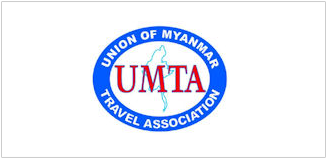The Mon are considered to be the first inhabitants of Myanmar possibly as early as 3,000 BC. The Mon people settled in central Myanmar and on down along the Bay of Bengal covering the eastern coast. Irrigation systems were created and contacts, both cultural and commercial were established with India. In addition to keeping in contact with India, the Mon people had contact and influence upon their Mon neighbours in Siam (current day Thailand). As with the others who followed, the Monshad gone down the Irrawaddy River to set up their establishments. Following the Mons, were the Pyu, although they arrived much later in time. They started a capital in AD 628, near modern day Prome, but in the mid-ninth century, the arrival of the Burmans absorbed the communities of the Mon and Pyu people that were in their path.
The Pagan Kingdom brought about the first unified state of Myanmar, through King Anawrahta (1044-1077). The state compared to a Hindu kingdom, with support coming from household taxes. By the thirteenth century though, Myanmar was starting to decline in part due to large amounts of money and time being spent on building pagodas. In 1287, Kublai Khan ransacked Pagan thus starting a period of continual conflicts that continued for many centuries. The appearance of Europeans had little effect on Myanmar due to their internal (and external) conflicts until they infringed on the Raj in Bengal. This brought about British occupation to keep peace on the borders of these countries and after 60 years, took over all of Myanmar. A positive result of this was that Myanmar became the world’s major exporter of rice. The downside is that there was also an influx of Chinese and Indian immigrants, who tended to exploit the Burmans. There was also slow social disintegration due to the British rule and it brought about a nationalist movement.
The start of World War II was a time for political development among individuals. A student leader, U Aung San, put together the Burma Independent Army (BIA), a group who had been previously trained by the Japanese. In 1942, when the Japanese invaded Myanmar, the BIA joined the Japanese forces. Although they didn’t fight many battles, their numbers greatly increased eventually enabling them to overthrow the then weak Japanese government at the end of the war. By now they were known as the Anti-Fascist People’s Freedom League (AFPFL), with U Aung San still being the leader.
After the war, the AFPFL talked with the British in an attempt to gain the independence of Myanmar and in April 1947 they won a majority of the constitutional assembly seats. Three months later, U Aung San’s political adversary U Saw had him, along with most of his cabinet, assassinated. Myanmar’s leader, as well as the AFPFL’s, during its early years of independence was U Nu, a former student leader and the foreign minister of Ba Maw.
In 1962, an army takeover by General Ne Win, threw out U Nu’s government and put U Nu in prison for four years. General Ne Win’s idea was to turn Myanmar into a socialist country.

 (+612) 8007 3237
(+612) 8007 3237 tours@myanmartravelgroup.com
tours@myanmartravelgroup.com 


